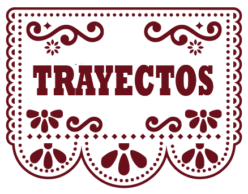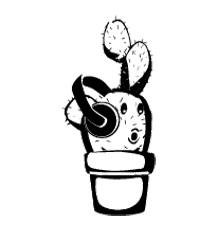 Las emociones de Ricardo
Las emociones de Ricardo
En la sección anterior, hablamos de Ricardo. Su estilo de vida en España no es muy bueno. ¿Cómo son sus emociones y necesidades diarias? Pay attention to how we use the verb tener to talk about them. How are these ideas expressed in English? What does this tell you about Spanish and English? Let’s see…
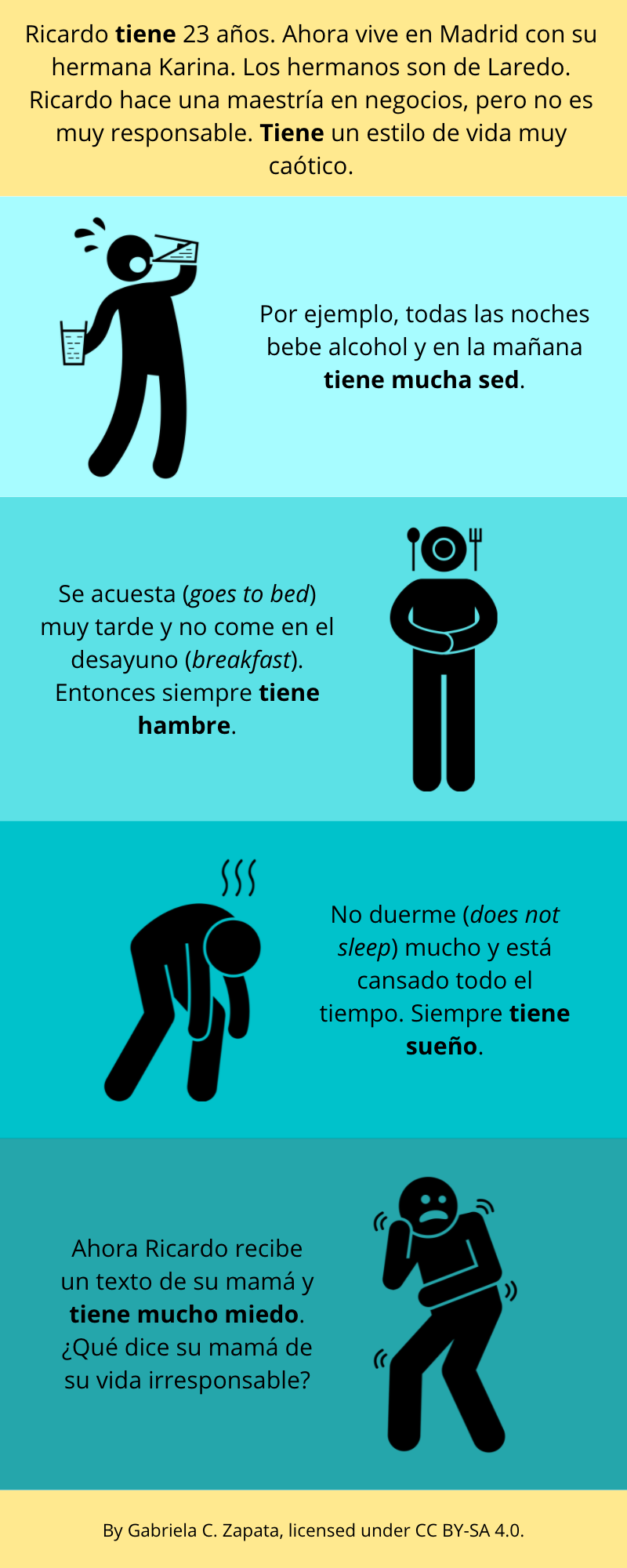
Las expresiones con tener
As you can see in the statements about Ricardo’s life, in Spanish, the verb tener is used to describe emotions and states that, in English, we express with the verb to be (e.g., to be thirsty, to be hungry, to be a certain age, etc.). Here are some expressions that work in this way:
| tener calor | to be hot |
| tener frío | to be cold |
| tener hambre | to be hungry |
| tener miedo | to be afraid |
| tener prisa | to be in a hurry |
| tener razón | to be right |
| tener sueño | to be sleepy/tired |
Y tú, ¿cuándo sientes estas emociones? ¿Por qué? Describe los momentos cuando experimentas estas emociones o estados.
Tengo razón cuando tengo evidencia legítima sobre un tema.
Practicamos el uso de estas expresiones. Vamos a Actividad 3-19. Estudiantes en el mundo Es lunes y los estudiantes hacen sus actividades en el mundo. Mira las fotos a continuación y con un@ compañer@ describe qué ocurre en cada una. Describe cada fotografía respondiendo estas preguntas. Foto número 1 Foto número 2 Foto número 3 Compara tus descripciones con otro par. ¿Tienen descripciones similares?![]() ¡Manos a la obra!
¡Manos a la obra!![]() Paso 1
Paso 1

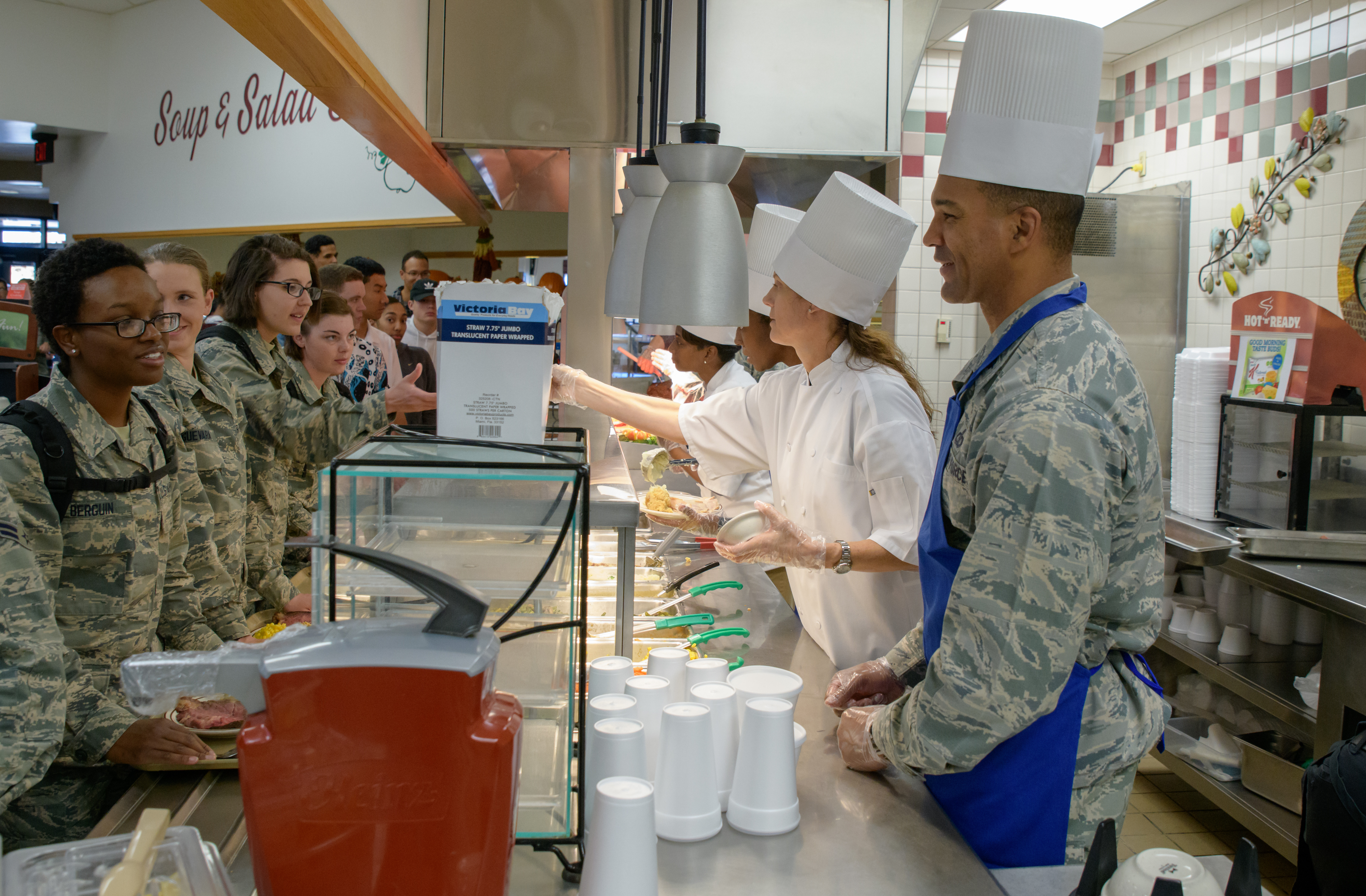
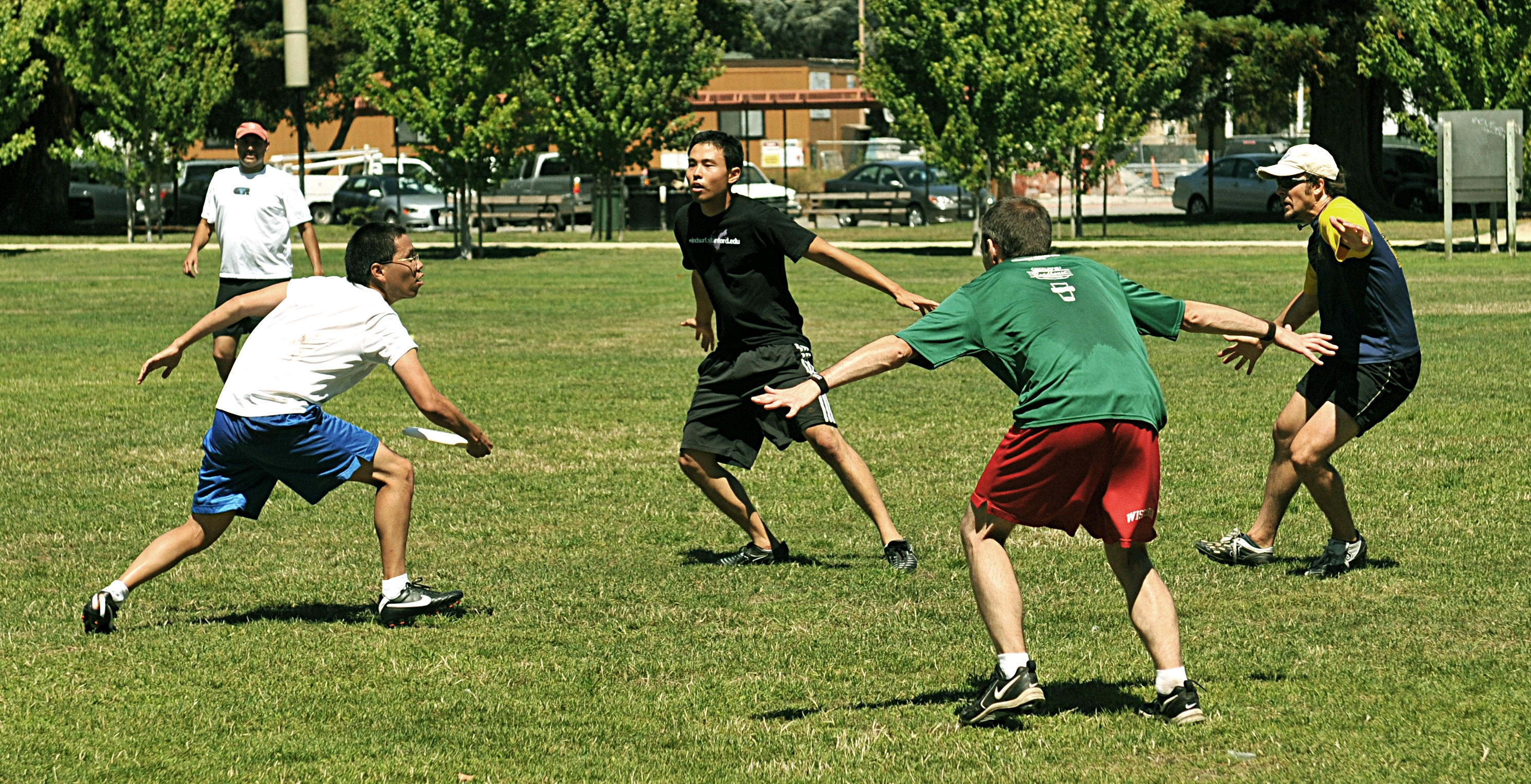
![]() Paso 2
Paso 2
Click on the following button to continue using your new vocabulary and expressions.
Now it’s time to practice everything we have learned in Módulo 3
